
MARKET GUIDE: Wheeled excavators (20 to 26-tonne)
Peter Anderson reviews the latest wheeled excavators with operating weights between 20 and 26 tonnes – all powered by ultra-low emission Stage 5 engines
Not so long ago, wheeled excavators, aka rubber ducks, were the highly mobile equivalent of 12/13-tonne tracked machines. However, in recent years larger models have been added to manufacturers’ ranges, providing wheeled versions of 21/22-tonne class excavators.
As standard, such modern rubber ducks offer a similar lifting and digging performance envelope as their equivalent tracked counterparts. The added advantage is far greater mobility, both around a large site and travelling under their own steam on the road. This typically comes at around a 15% price premium over a similar-sized crawler machine.
Manufacturers tend to offer a much wider variety of configurations on their wheeled machines, with the larger models often configured as, what essentially are, compact material handlers. Chassis options can include a variety of counterweights, front or front and rear stabilisers, a dozer blade, with various monobloc, offset and articulated working equipment configurations available. One consequence of which is that there is a wide range of operating weights for an individual model, which often bears little resemblance to its model name.
Seen as an ideal platform for an arsenal of attachments coupled via a tilt-rotator, wheeled excavators are a popular choice for owner-operators, in addition to being a key part of contractors’ fleets, working across a bewildering array of industry sectors.
A wheeled excavator offers far more flexibility than a crawler machine and can reliably perform with less maintenance. They also tend to command higher residual values, as they tend not to be abused as much as a common tracked excavator. A reflection on the higher value-added work they tend to undertake, and the quality of operators usually assigned to such machines.
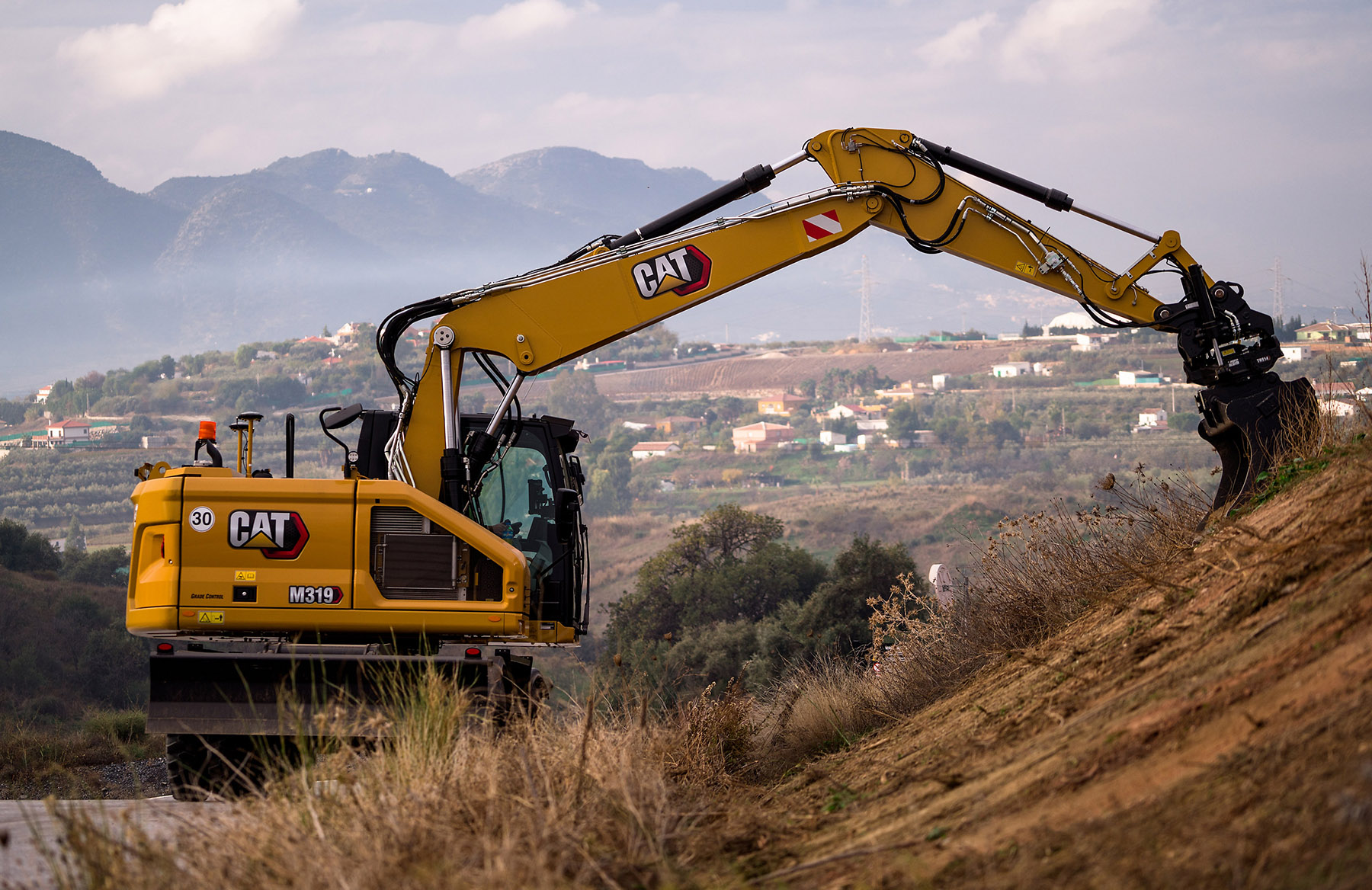
CATERPILLAR
Caterpiller has added the M319 and M320 models to the upper-end of their wheeled excavator range, which includes the 20t class M317 and the legacy 22t M322F model. The M319 design features both a short front-end swing, in addition to a rear swing radius of just 1.9m, for work in confined areas. With a maximum weight of 21t, the compact M319 offers a maximum dig depth 5.75m and a maximum loading height of 7.79m.
The new duck is powered by a Cat C4.4 engine, rated at 128kW. This drives an upgraded hydraulic system that is said to deliver up to 15% more slewing torque, thanks to the use of a dedicated swing pump. In turn, this allows consistent power to be delivered to the main hydraulic services, for better multi-tasking capabilities.
Weighing-in at 21.2t the new M320 features a marginally more powerful 129.4kW version of the engine fitted in the M319 and offers a maximum dig depth of 6.03m and a loading height of 6.96m. Its longer wheelbase offers increased stability and improves the 35kph machine’s ride.
The M320 replaces the M320F model, the new design delivering further improvements in daily maintenance schedules, extended filter life and longer service intervals. The larger model also features an upgraded hydraulic system, delivering more slewing torque and offering improved operating efficiencies when working with hydraulic-powered attachments.
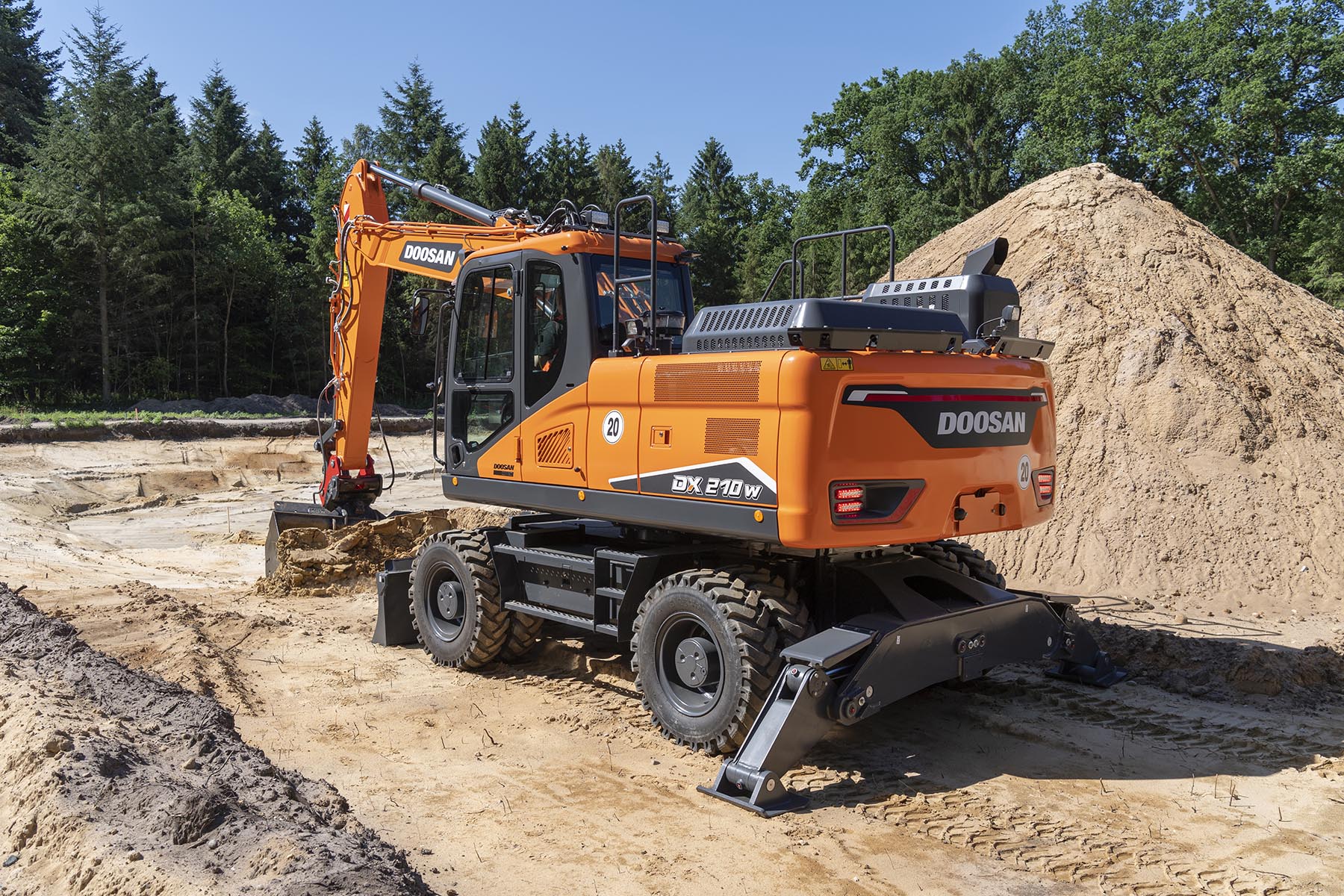
DOOSAN
Doosan’s new 21.9t DX210W-7 is powered by an in-house 6-cylinder engine rated at 141kW. Its working equipment provides a maximum digging depth of 6.16m, a maximum digging reach of 9.98m and a maximum digging height of 10.14m.
With a range of counterweights available, a new tilt-rotator hydraulic mode, coupled with an attachment hydraulic mode, this generation of Doosan ducks are ideally suited to working with the more complex hydraulically-powered attachments. This is further helped by a change in front end geometry, allowing a greater range of movement when working with rotating attachments, such as mulchers.
A new Auto Digging Brake feature automatically holds the service brake in position when the vehicle stops. The steering column has been redesigned, including a new tilting lever and an 80mm telescopic function. There is also a new load suspension system available, together with optional joystick steering.
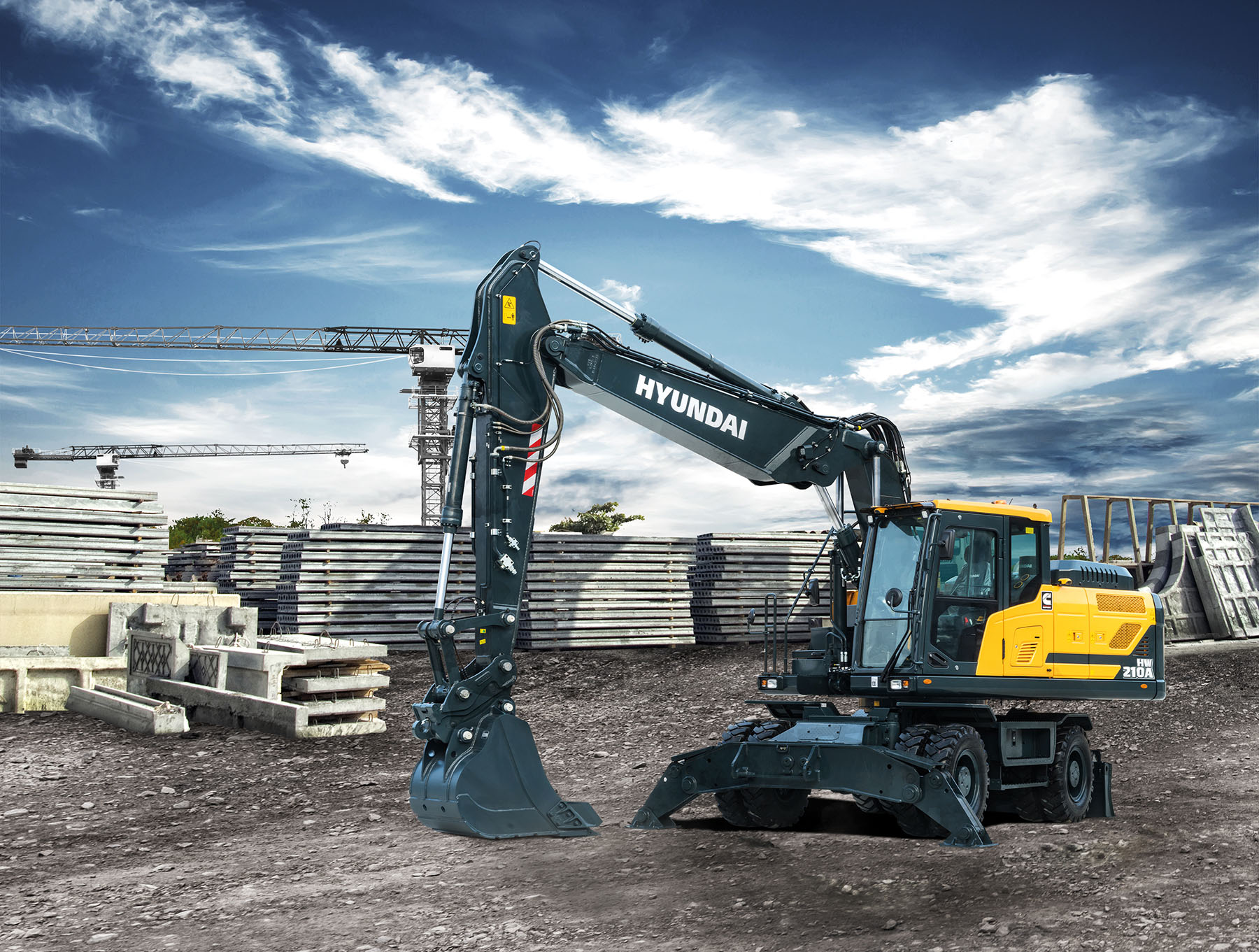
HYUNDAI
The 21.2t Hyundai HW210A wheeled excavator is powered by a state-of-the-art 6-cylinder Cummins engine, rated at 145kW. This delivers a whopping 31% more torque than its predecessor, promising good fuel consumption.
This drives a Rexroth load sensing hydraulic system, featuring load independent flow control, to deliver consistent operating speeds and improved controllability. The hydraulic system provides the operator with the options of auto boom/swing priority modes and auto power boost, together with a boom-down hydraulic regeneration system and improved arm-in speeds.
The enlarged cab has improved visibility, see-through upper skylight and a larger glazed area on the offside. The new joysticks are adjustable in height, with the cab also featuring a high-tech 18cm touchscreen monitor/control panel, optional extras include a joystick steering system. The new design of steering column features lower and upper section tilting and a central telescopic feature. It’s a s slimmer design with no lever on the right, resulting in improved visibility.
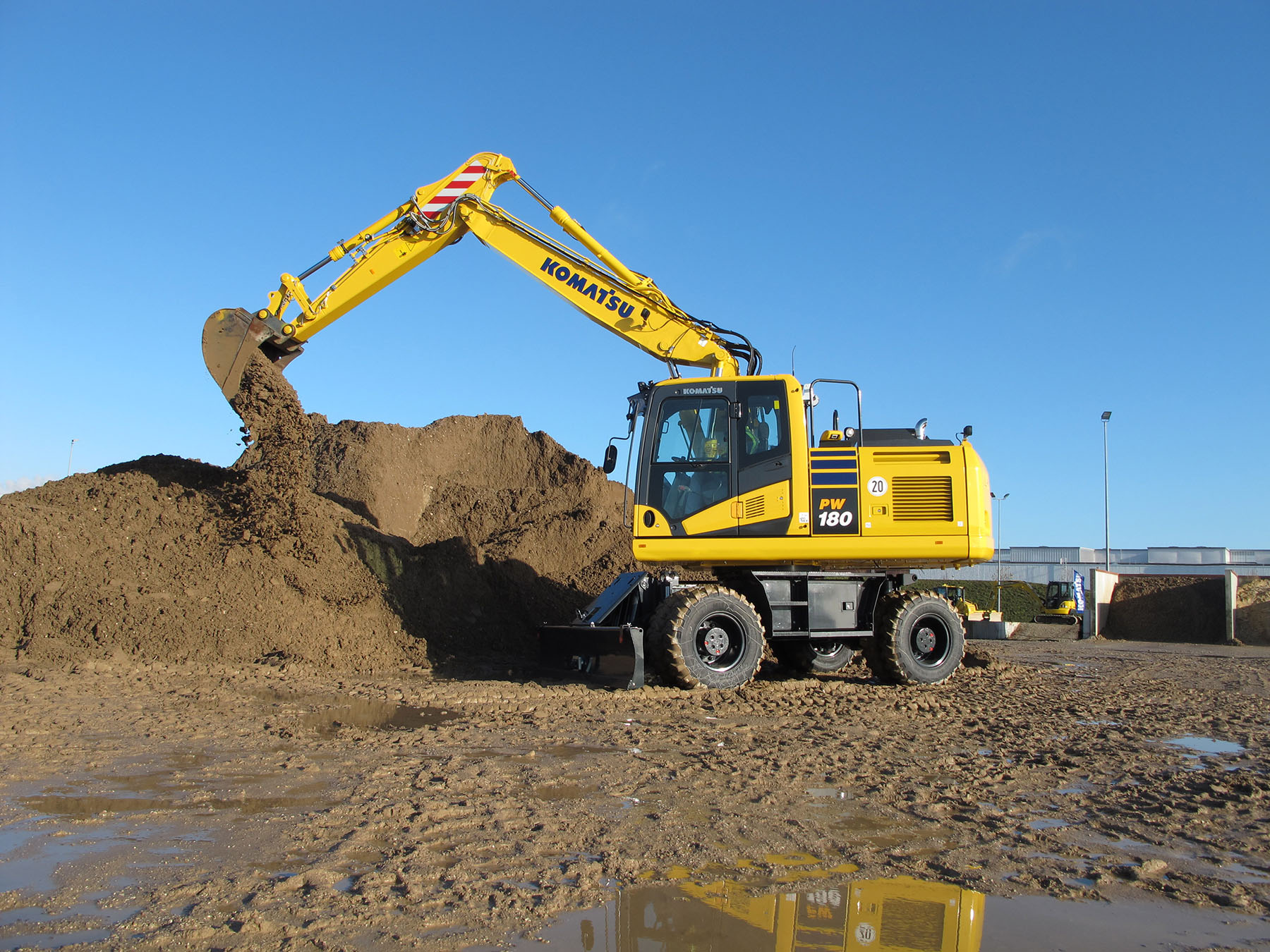
KOMATSU
At the top end of the Komatsu wheeled excavator range is the PW180-11 model, with a maximum operating weight of 20.6t, it is the most compact machine in this sector of the market. Powered by a 123kW Komatsu engine driving their latest generation of Dash 11 hydraulic systems, it is ideal for tight urban jobsites, delivering high performance from a relatively small package.
The cab features suspended joystick consoles, with joystick steering available as an option. Its new boom suspension system is said to provide a significant increase in operator comfort when travelling uneven ground. The PW180-11 comes standard with Komatsu’s multi-camera system to further improve site safety and their comprehensive remate data monitoring telematics system.
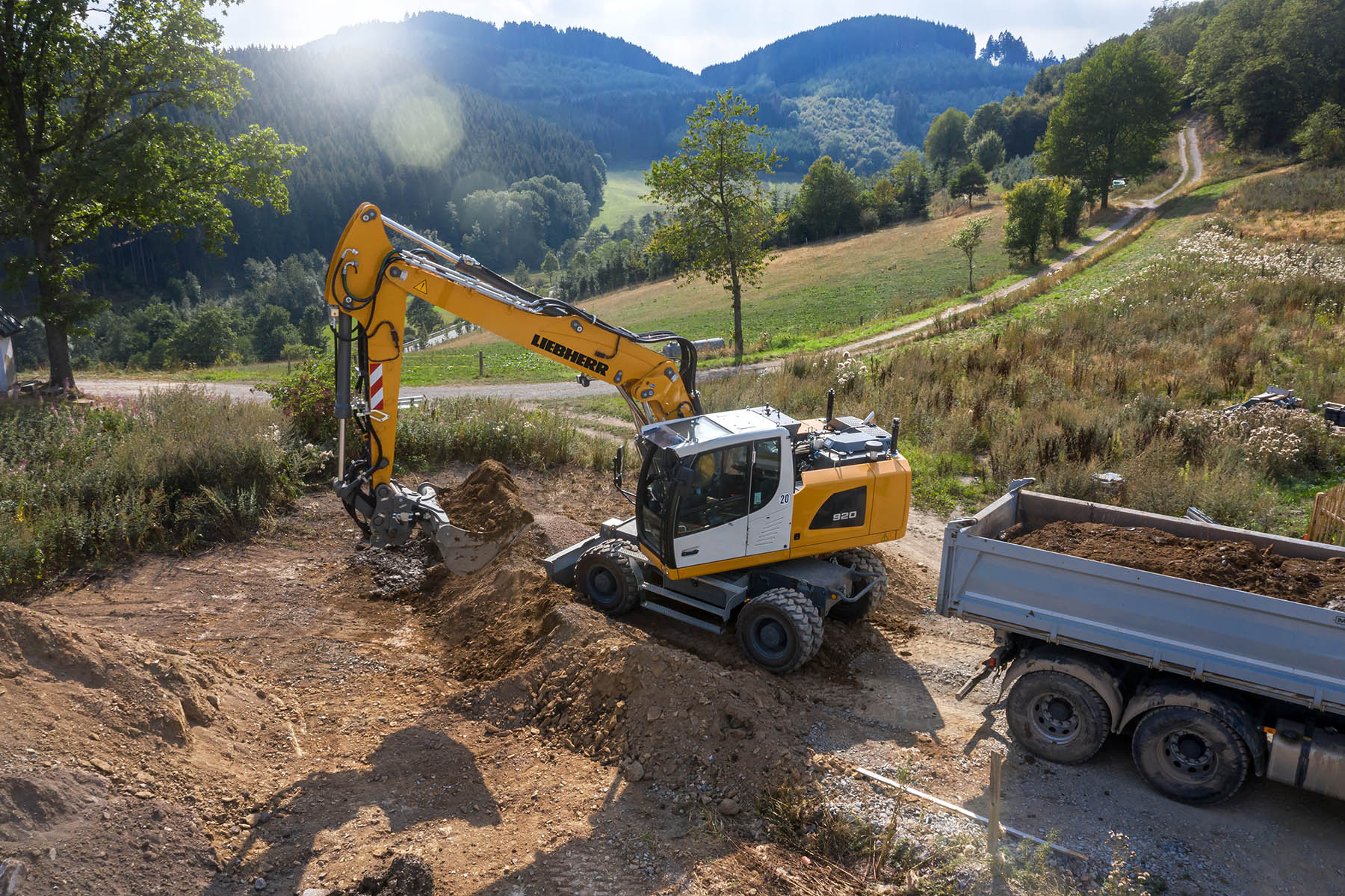
LIEBHERR
Liebherr offer two base models of wheel excavator with operating weighs of above 20t, the A920 and the A924. With a maximum operating weight of 21.3t, the A920 is powered by a 129kW Liebherr engine, with chassis options including front and rear outriggers and a dozer blade.
The standard 5.4m two-piece main and intermediate boom is matched to a choice of four dipper sticks, with lengths from 2.25m to 3.05m. The A920’s maximum digging depth is 6.6m, its maximum dump height is 7.75m, with a wide range of configurations to suit buckets from 0.55 to 1.20 cubic metres.
The larger 140kW A924 model can be configured as a 21.5-tonner, but most are supplied as considerable heavier rubber ducks, weighing up to an impressive 26.5t. Equipped with a 5.8m two-piece boom, allied to dipper sticks from 2.25m to 3.05m, this delivers a maximum dig depth of 7.05m and a loading height of 8.35m, with buckets up to 1.65cu.m.
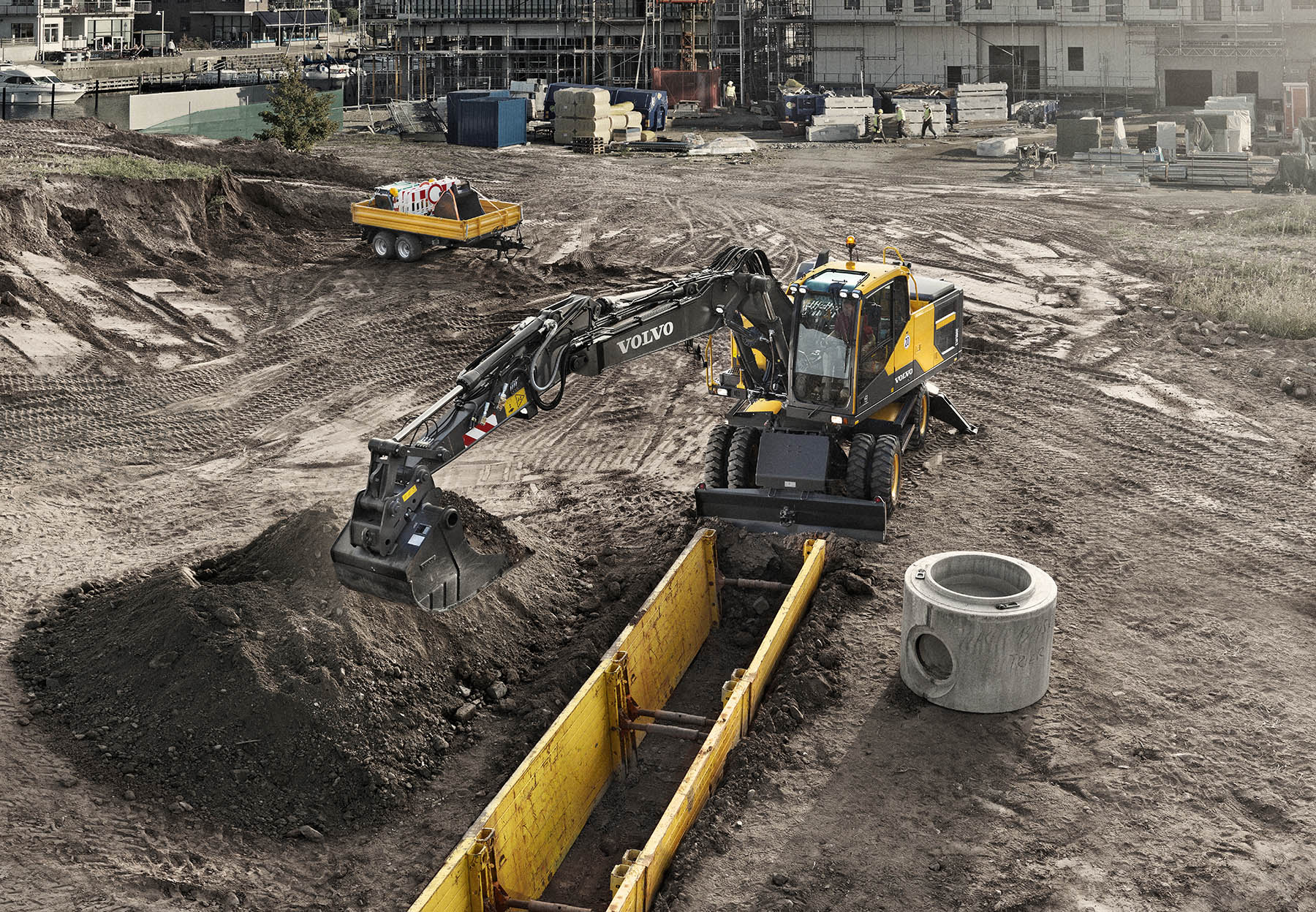
VOLVO
The top of the Volvo rage of wheeled excavators are the EW180E and EW220E models, both powered by an in-house engine rated at 129kW. Depending on how a EW180E is configured, it’s operating weight ranges from a lowly 18.2t to an impressive 23.4t. There is a choice of a 5.2m mono boom or a 5.47m two-piece boom assemble, with the choice of 2.45m, 2.5m or 3.0m dippers. The duck’s maximum dig depth is 6.1m and 6.41m, with maximum dumping heights of 6.88m and 8.12m respectively, depending on the boom configuration.
A basic-spec EW220E, if there is such a thing, starts out with an operating weight of 23-tonnes, rising to a maximum of a mighty 26.8t. Again, there is a choice of two boom configurations, a 5.7m mono boom or a 5.72m two-piece boom, allied to a dipper stick of either 2.45m, 2.6m or 2.9m. This provides maximum dig depths of 6.46m and 6.61m and dumping heights of 7.24m and 8.09m respectively. The latest generation of Volvo cab features proportional multi-function joysticks, from which various machine functions can be controlled, even the optional hydraulically-operated cab riser.
Article featured in the January 2022 issue of Earthmovers Magazine. Subscribe to the industry-leading construction machinery publication here.